San Marino is one of the world’s smallest countries. It is a landlocked microstate surrounded by Italy. Though small, it is packed with history, stunning landscapes, and medieval charm. Travellers visit to explore its ancient towers, museums, and breathtaking views. Located on Monte Titano, this tiny republic offers unique experiences. It has a well-preserved old town, which is a UNESCO World Heritage Site. Walking through its stone streets feels like stepping into history.
Location
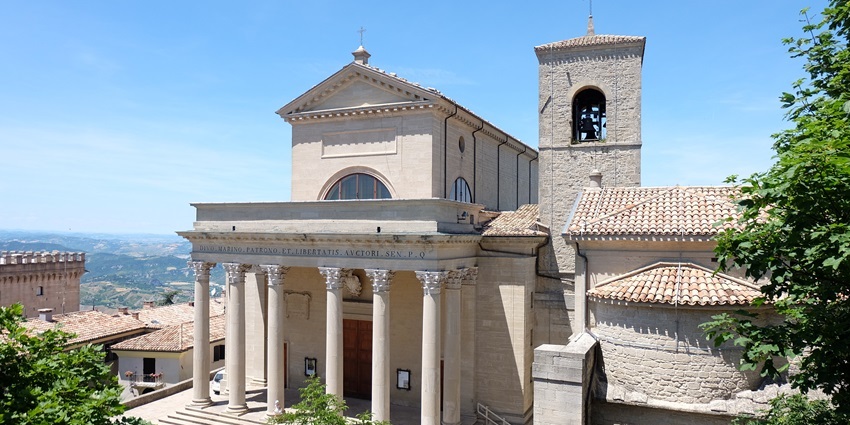
Photo: Przemek Jahr / Wikimedia Commons
It is a landlocked microstate in southern Europe, completely surrounded by Italy. It is located on Monte Titano, near the Adriatic coast, about 10 km from Rimini. The country covers 61 square kilometres, making it one of the world’s smallest nations. Despite its size, it offers stunning landscapes and medieval architecture.
How To Reach San Marino
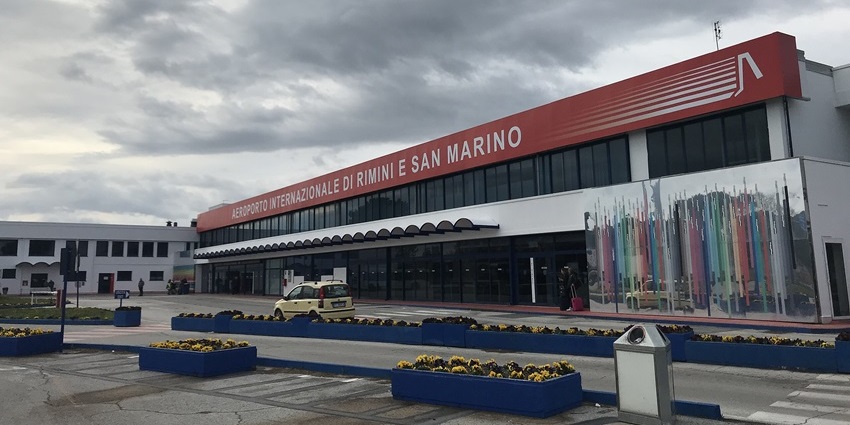
Photo: TeddyDTE / Wikimedia Commons
By Air: The country does not have an airport. The nearest airport is Federico Fellini International Airport in Rimini, Italy, about 20 km away. From Rimini, you can take a taxi or bus to the location.
By Train: There is no train station in this country. The nearest station is in Rimini. From there, take a bus or taxi.
By Road: A public bus service runs between Rimini and the San Marino location. The journey takes about 50 minutes, and a round-trip ticket costs around €12.
Places To Visit In And Around San Marino
Here are 5 places to visit in and around this country, adding more excitement to your journey:
1. Palazzo Pubblico And Piazza Della Libertà

Photo: LPLT / Wikimedia Commons
The Palazzo Pubblico, or Government House, is the nation’s political heart. Built in the late 1800s in a neo-Gothic style, it features stone from Monte Titano. The facade showcases coats-of-arms of nation’’s municipalities. Inside, a grand staircase leads to the Council Hall, where the government meets. Outside, Piazza della Libertà offers a panoramic view of the region.
Location: Piazza della Libertà
Major Attraction: Government building and guard ceremony
Ideal Trip Duration: 30 – 45 minutes
2. Basilica Di San Marino
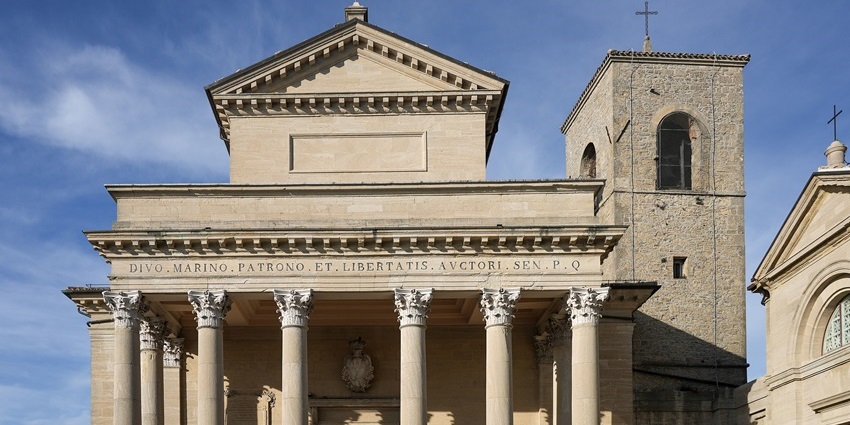
Photo: Newbio623 / Wikimedia Commons
The Basilica di San Marino is a Catholic church located on Piazza Domus Plebis. It was rebuilt in 1836 in neoclassical style, replacing a 7th-century church. The interior is grand, with a long nave, two aisles, and altars with religious artworks. The high altar holds an urn with relics of Saint Marinus. A statue of St. Marinus, sculpted by Tadolini, adds to the church’s beauty.
Location: Piazza Domus Plebis
Major Attraction: Religious site and relics of Saint Marinus
Ideal Trip Duration: 30 minutes
3. Museo Di Stato (State Museum)

Photo: Granger / Wikimedia Commons
The Museo di Stato, or State Museum, is a treasure trove of the country’s history. Located in Palazzo Pergami Belluzzi, it houses over 5,000 artefacts, including archaeological finds, religious relics, coins, and artwork. It showcases the country’s past, from prehistoric times to modern-day. Visitors can explore Etruscan and Roman artefacts, Renaissance paintings, and exhibits on the nation’s independence.
Location: Piazzetta del Titano
Major Attraction: Historical artifacts and cultural exhibits
Ideal Trip Duration: 1 hour
4. Monte Titano
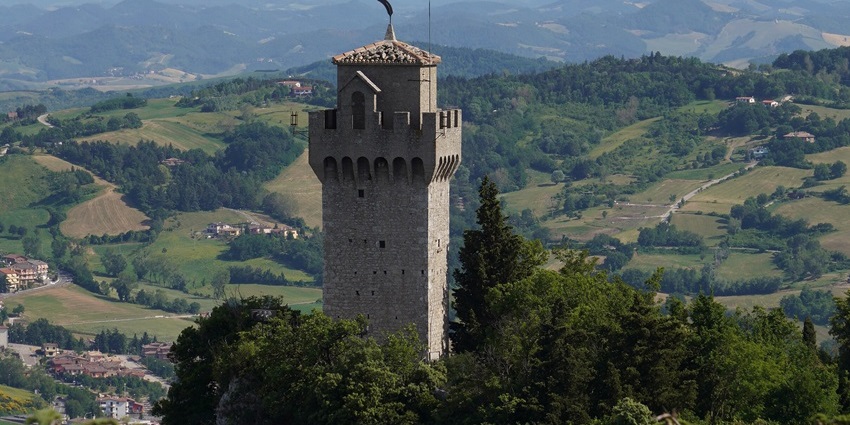
Photo: Commonists / Wikimedia Commons
Standing at 739 meters, Monte Titano is the country’s highest peak. The mountain is a UNESCO World Heritage Site, offering breathtaking views of the Adriatic Sea, Rimini, and the Apennines. A network of hiking trails leads to scenic viewpoints, mediaeval fortresses, and lush landscapes. Visitors can explore the Three Towers, ancient defence structures that define the country’s skyline. It offers stunning views of Italy’s countryside and the Adriatic Sea.
Major Attraction: Panoramic views and hiking trails
Ideal Trip Duration: 1.5 – 2 hours
5. The Three Towers Of San Marino (Guaita, Cesta, And Montale)

Photo: Commonists / Wikimedia Commons
The Three Towers of San Marino are the symbol of the republic. Guaita, the oldest and most famous tower, dates back to the 10th century. Cesta, on the highest peak of Monte Titano, houses the Museum of Ancient Arms. Montale, the smallest tower, is closed to the public but offers a picturesque backdrop. These towers are part of the country’s location as a fortified mediaeval city.
Location: Monte Titano
Major Attraction: Historic towers and scenic walkway
Ideal Trip Duration: 1.5 – 2 hours
Where To Stay
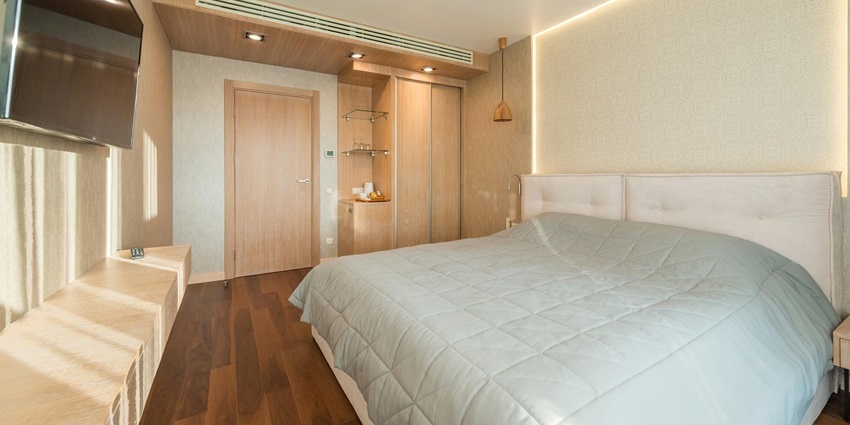
Photo: Max Vakhtbovycn / Pexels / Image For Representation Only
The country offers a variety of accommodations, from luxury hotels to budget-friendly stays. For a luxurious experience, the Grand Hotel San Marino provides spa services and panoramic views, while Hotel Titano, in the historic centre, is perfect for sightseeing. Mid-range options include Hotel Rosa, known for its family-friendly atmosphere, and La Grotta Hotel, offering modern comforts. Budget travellers can stay at Hostaria da Lino, a charming guesthouse, or Antica Bifora, a cosy B&B with historical charm.
Where To Eat
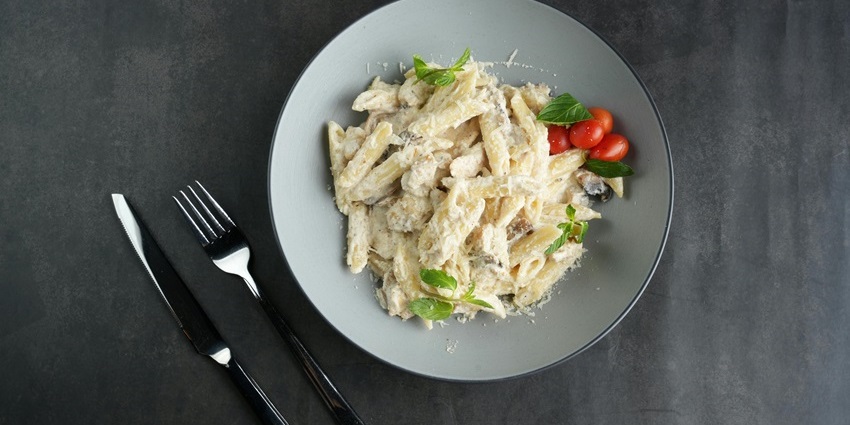
Photo: Esmihel Muhammed/ Pexels / Image For Representation Only
This country’s food is influenced by Italian cuisine but with unique local flavours. The best restaurants offer a mix of traditional and gourmet dishes. Ristorante La Terrazza serves delicious pasta, seafood, and grilled meats. Righi La Taverna, a Michelin-starred restaurant, provides a fine dining experience. Nido del Falco is famous for its handmade pizza and pasta, while L’Arzdora specialises in authentic dishes. Must-try local foods include Torta Tre Monti, Piadina Sammarinese, and Cacciatello.
Best Time To Visit

Photo: Eleassar / Wikimedia Commons
The best time to visit depends on the weather and crowd levels. Spring (April-June) offers pleasant temperatures and is perfect for sightseeing with fewer tourists. Autumn (September-October) brings mild weather and colourful landscapes, making it an excellent time to explore. Summer (July-August) is hot and crowded, but it’s ideal for festivals and cultural events. Winter (November-March) is cold and quiet, except for the festive Christmas season.
Other Factors To Consider

Photo: CC0 Public Domain/ Px Here / Image For Representation Only
Tips For Travellers
- Language: Italian is the official language.
- Currency: The Euro (€) is used everywhere.
- Credit Cards: Accepted, but some shops prefer cash.
- Public transport is limited, so walking is the best option.
San Marino is a hidden gem in Europe. Despite its small size, it offers historic sites, stunning views, and rich culture. From the Three Towers and Monte Titano to Palazzo Pubblico, there are many must-have experiences in this country. It is easy to explore in a day, but staying longer allows you to enjoy its local cuisine, peaceful atmosphere, and historical charm. Plan your trip to this unique microstate with TripXL.
Cover Photo: Alessandro Cesarano / Pexels


 WhatsApp
WhatsApp
 Twitter
Twitter









